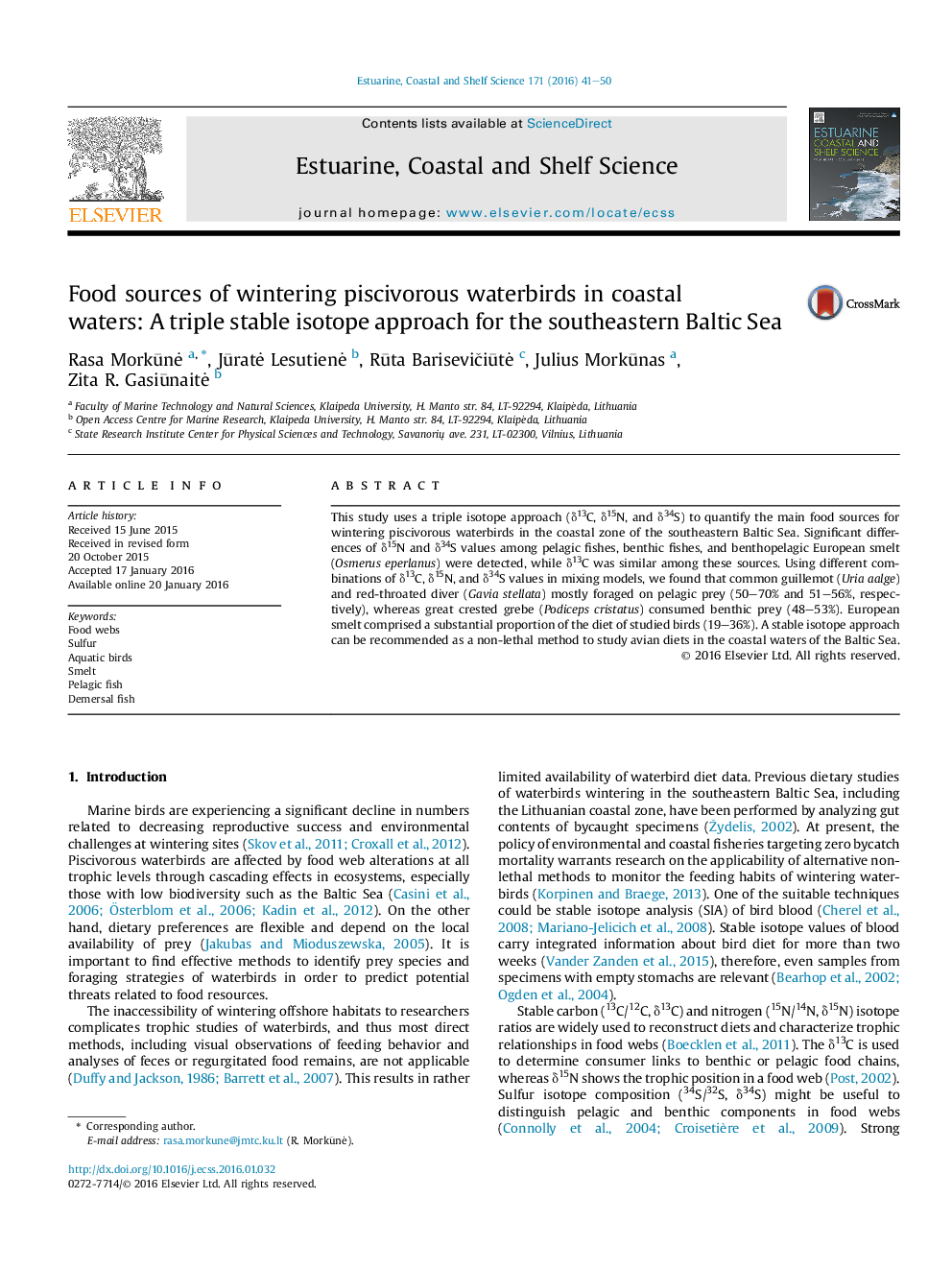| Article ID | Journal | Published Year | Pages | File Type |
|---|---|---|---|---|
| 4539280 | Estuarine, Coastal and Shelf Science | 2016 | 10 Pages |
•Non-lethal isotopic analysis in blood provides information on waterbird winter diet.•Stable sulfur isotope discriminates between pelagic fishes and benthic fishes.•Anadromous smelt is isotopically unique within fish community.•Triple isotope mixing models provide more precise solutions than dual or single isotope models.
This study uses a triple isotope approach (δ13C, δ15N, and δ34S) to quantify the main food sources for wintering piscivorous waterbirds in the coastal zone of the southeastern Baltic Sea. Significant differences of δ15N and δ34S values among pelagic fishes, benthic fishes, and benthopelagic European smelt (Osmerus eperlanus) were detected, while δ13C was similar among these sources. Using different combinations of δ13C, δ15N, and δ34S values in mixing models, we found that common guillemot (Uria aalge) and red-throated diver (Gavia stellata) mostly foraged on pelagic prey (50–70% and 51–56%, respectively), whereas great crested grebe (Podiceps cristatus) consumed benthic prey (48–53%). European smelt comprised a substantial proportion of the diet of studied birds (19–36%). A stable isotope approach can be recommended as a non-lethal method to study avian diets in the coastal waters of the Baltic Sea.
